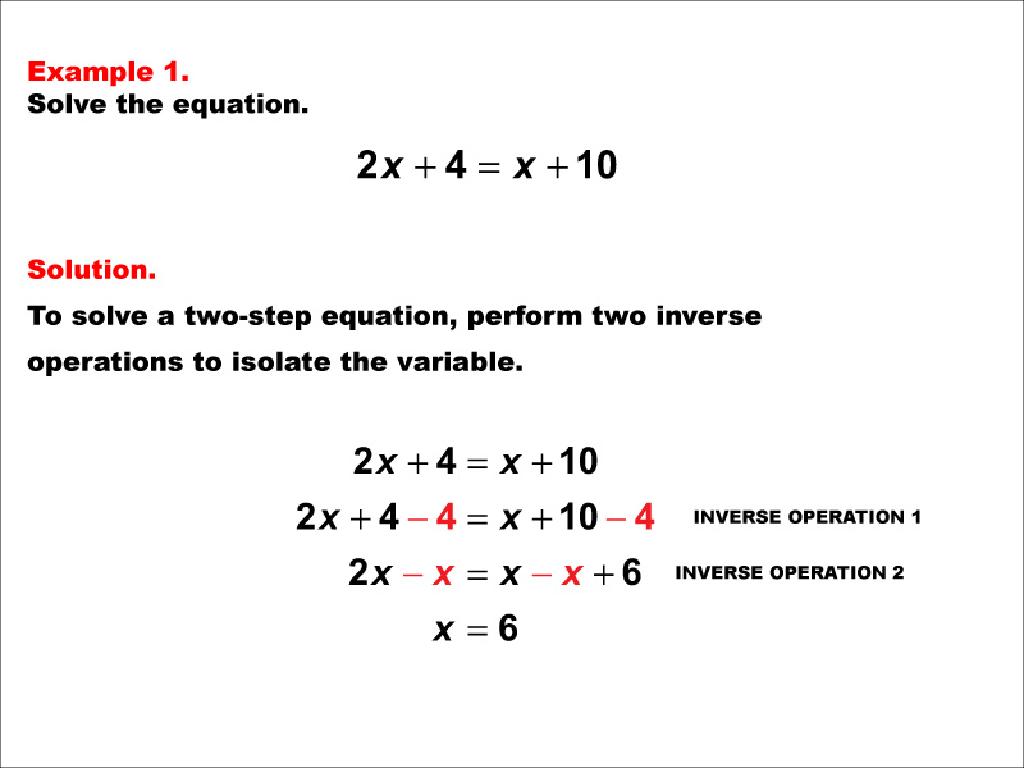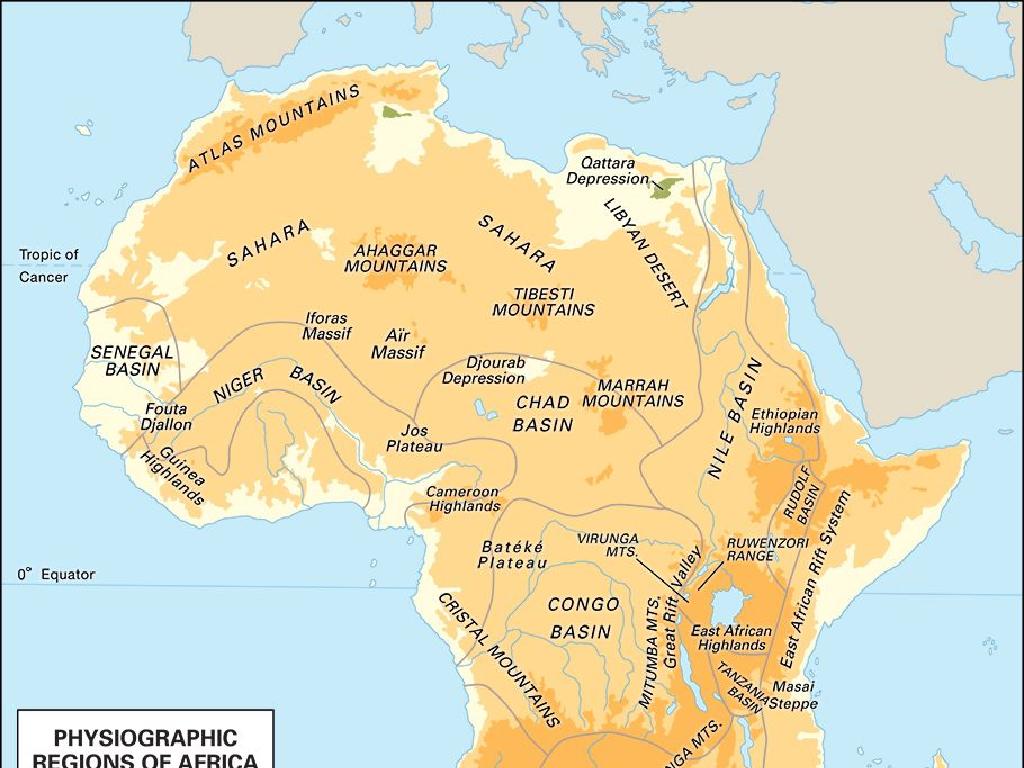Multiplication Facts For 6, 7, 8, And 9: Find The Missing Factor
Subject: Math
Grade: Third grade
Topic: Multiplication Fluency Up To 10
Please LOG IN to download the presentation. Access is available to registered users only.
View More Content
Welcome to Multiplication!: Mastering Facts for 6, 7, 8, 9
– Explore multiplication as groups
– Think of multiplication like adding groups of the same number.
– Multiplication facts for 6, 7, 8, 9
– Practice with numbers 6-9 to become a multiplication hero!
– Finding the missing factor
– Use multiplication facts to solve puzzles with missing numbers.
– Why multiplication is a super skill
– It helps us solve problems quickly and is used in many areas of life!
|
This slide introduces third graders to the concept of multiplication as a method of adding equal groups of numbers. Emphasize the importance of mastering multiplication facts for 6, 7, 8, and 9, as these are the building blocks for higher-level math skills. Encourage students to view finding the missing factor as a fun challenge, like solving a puzzle. Explain that multiplication is a super skill because it makes math problems easier and faster to solve and is used in everyday situations, from shopping to telling time. Provide examples and plan interactive activities where students can practice these skills.
Warm-Up: Multiplication Review
– Review facts up to 5
– Partner practice: 5 x 3?
– Work with a classmate to solve 5 x 3
– Share a multiplication fact
– Think of a fact you know well and tell the class
– Encourage each other’s learning
– Listen and support your classmates’ facts
|
This slide is designed to serve as a warm-up activity to refresh students’ memory on multiplication facts they have already learned. Start by asking the class to recall multiplication facts up to 5. Then, have them pair up and practice with the example given (5 x 3) to promote peer learning. Encourage each student to share one multiplication fact they remember with the class to build confidence and reinforce their knowledge. This activity also fosters a supportive learning environment where students can encourage and learn from each other. As a teacher, circulate the room to offer guidance and praise, ensuring that all students are engaged and understand the exercise.
Discovering Patterns in Multiplication
– Multiplication and patterns
– Multiplication helps us see numbers in patterns.
– Spotting patterns: 6, 7, 8, 9 tables
– Look for what’s similar in 6×2, 6×3, 6×4… Can you see it?
– Exploring the 6 times table
– Let’s look at 6×1, 6×2, 6×3, etc. What do you notice?
– Finding the missing factor
– Use patterns to find what number times 6 equals 18, 24, or 30.
|
This slide introduces the concept of patterns within multiplication, specifically focusing on the 6, 7, 8, and 9 times tables. Begin by explaining that multiplication isn’t just about memorizing facts; it’s also about recognizing patterns that make finding the answers easier. Engage the students by asking them to observe the patterns in the 6 times table. For example, every product in the 6 times table is even. Encourage them to look for and describe any patterns they notice. Then, guide them to apply these patterns to find missing factors. For instance, if 6 x ? = 24, what is the missing number? This approach helps students to understand multiplication more deeply and to use patterns as a tool to solve problems.
Mastering Multiplication: The 6 Times Table
– Learn 6 times table with tricks
– Mnemonics help us memorize faster, like ‘5, 6, 30 sticks’ for 5 x 6 = 30
– Remember: 6 x 6 is thirty tricks!
– Think of two 6s playing a game with 36 tricks
– Fill in the blanks for 6’s
– We’ll practice together to find missing numbers in 6’s multiplication
|
This slide is aimed at helping third graders memorize the 6 times table using mnemonics, which are memory aids. For example, ‘Six times six is thirty tricks’ can help students remember that 6 x 6 equals 36. Encourage the students to come up with their own creative phrases to remember other multiplication facts for 6. During practice time, provide exercises with missing factors for the students to fill in, reinforcing their memorization through repetition. Offer praise for effort and correct answers to build confidence. For those struggling, suggest pairing up with a partner for peer learning.
Multiplication Facts for 7: Lucky Number Seven
– Learn the 7 times table
– Example: 7 x 3 = 21
– Think ‘7 hats on three cats’ to remember
– Visualize with fun imagery
– Use pictures to make it stick
– Group Activity: Matching game
– Find pairs of numbers that multiply to make 7’s facts
|
This slide introduces the multiplication facts for the number 7, emphasizing the 7 times table as a key skill for third graders. Start by reciting the 7 times table with the class, then present the example 7 x 3 = 21, using a fun and memorable image like ‘seven hats on three cats’ to help students visualize and remember the fact. For the group activity, prepare cards with multiplication facts and their products for the number 7. Students will work in groups to match each multiplication fact with the correct product, reinforcing their understanding of the 7 times table. This interactive approach encourages participation and helps solidify the concept in a playful, engaging manner.
Great Eights: Mastering the 8 Times Table
– Learn the 8 times table
– Example: 8 x 4 = 32
– Like eight wheels on four cars!
– Remember with a fun fact
– Helps to visualize and memorize
– Individual Task: Reflect on 8’s facts
– Which are easy or hard for you?
|
This slide is focused on helping third-grade students become fluent with the 8 times table. Start by going over the multiplication facts for 8, ensuring students can recite them. Use the example of ‘8 x 4 = 32’ to show practical application, such as counting wheels on cars, to make the concept more relatable and memorable. For the individual task, encourage students to write down the facts they find easy to remember and those they find challenging. This will help you identify which facts need more focus in future lessons. In the next class, review these facts and provide additional examples or mnemonic devices to aid memorization. The goal is to build confidence and fluency in multiplying by 8.
Mastering Multiplication: The Nifty Nines
– Learn tricks for the 9 times table
– Example: 9 x 5 equals 45
– It’s like 9 groups of 5 bees each
– Imagine: Nine bees in five hives
– Visualize to remember the multiplication
– Class Challenge: Find a trick for 9 x 7
– Be creative and share your trick!
|
This slide is aimed at helping third graders understand and memorize the 9 times table through fun tricks and visualization. Start by explaining the patterns in the 9 times table, such as the digits of the products adding up to 9. Use the example of 9 x 5 to show how visualization can help with memorization – picturing nine bees in each of five hives can make the answer 45 more memorable. Encourage the students to come up with their own mnemonics or visual tricks for other products, like 9 x 7. This activity not only aids in memorization but also fosters creativity and class participation. Prepare to facilitate the sharing of different tricks and praise the students for their unique ideas.
Finding the Missing Factor
– Understanding missing factors
– It’s the number we multiply by another to get a product
– Example: 6 x ? = 42
– What number times 6 gives us 42?
– Pair up for practice
– Solve problems with a friend
– Work together to find missing numbers in equations
|
This slide introduces the concept of missing factors in multiplication, which is a fundamental skill for third-grade students to develop multiplication fluency. Start by explaining what a missing factor is and how it fits into a multiplication equation. Use the example problem to illustrate how to find the missing factor by thinking of what number, when multiplied by 6, equals 42. Encourage students to work in pairs to solve similar problems, fostering collaboration and peer learning. Provide guidance on using division as a strategy to find the missing factor. For the activity, prepare a set of multiplication problems with missing factors for students to solve with their partners. Offer different levels of difficulty to cater to varying skill levels within the class.
Game Time: Multiplication Bingo!
– Learn new multiplication facts
– Mark correct answers on Bingo
– Find the product, cover the number
– Get closer to BINGO with each fact
– Five in a row wins the game
– Ready, set, multiply!
|
This interactive game is designed to help students practice and reinforce their multiplication facts for 6, 7, 8, and 9. Provide each student with a Bingo card where the numbers are products of multiplication facts up to 10. Call out multiplication problems, and students must solve them to find the correct product on their Bingo card. When a student covers five products in a row (horizontally, vertically, or diagonally), they shout ‘BINGO!’ and win that round. Encourage quick thinking and accuracy. Possible variations of the game could include: using different patterns on the Bingo card, timed rounds, or team play. This activity not only makes learning fun but also promotes a competitive spirit and a sense of accomplishment among the students.
Class Activity: Multiplication Fact Detective
– Become a Multiplication Detective
– Search for clues around the classroom
– Look for hidden numbers or math problems
– Team up to find missing factors
– Use multiplication facts for 6, 7, 8, 9 to solve
– Fill in your detective sheet
– Record your answers on the sheet provided
|
This interactive class activity transforms students into detectives who must use their multiplication skills to solve problems. Set up the classroom with various ‘clues’ hidden numbers or math problems that involve the multiplication facts for 6, 7, 8, and 9. Students will work in small groups to find these clues and determine the missing factors. Each group will have a detective sheet to record their findings. As a teacher, facilitate the activity by ensuring all students are engaged and assist any group that may be struggling. Possible variations of the activity could include a timed challenge, riddles that lead to the next clue, or incorporating physical activities like jumping jacks for each found factor. The goal is to reinforce multiplication fluency in a fun and collaborative way.
Multiplication Mastery: Wrap-Up
– Key takeaways from today’s lesson
– Share a helpful multiplication memory trick
– Maybe a rhyme or a song helped you memorize a fact
– Discuss home practice strategies
– Use flashcards, games, or online quizzes for practice
– Reflect on our multiplication journey
|
As we conclude today’s lesson on multiplication facts for 6, 7, 8, and 9, it’s important to reflect on what we’ve learned. Encourage students to think about the strategies that helped them remember the multiplication facts. Did they use rhymes, songs, or patterns? Sharing these can help their classmates too. Discuss how they can continue practicing at home, suggesting tools like flashcards or educational websites. This reflection not only reinforces the day’s learning but also promotes continuous practice, which is essential for mastering multiplication facts.





